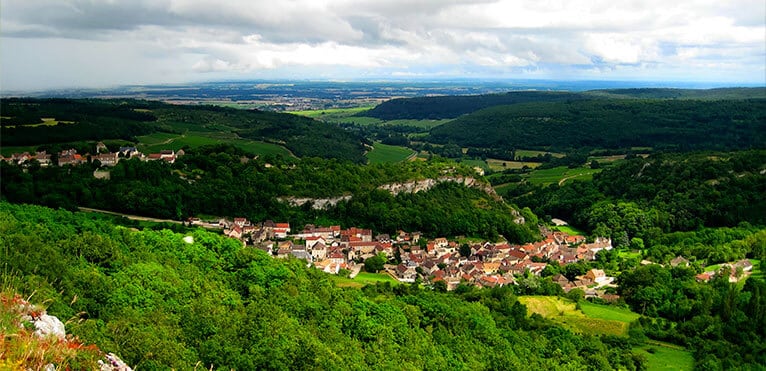
Contents
A historic site, only recently recognized
Located in Burgundy’s Côte de Beaune region, the Saint-Romain appellation area is rich in archaeological evidence of human settlements dating back to the Neolithic period. The presence of vines also goes back quite a long way, with an area said to be one of the first Celtic and Gallo-Roman vine sanctuaries in Burgundy.
Although vines have long been grown in Saint-Romain, it wasn’t until the 20th century that the vineyards began to gain recognition. Phylloxera marked the end of volume viticulture, with the concentration of vineyards on the best areas and greater care taken with the wines, leading to the almost exclusive production of “fine wines”. This conversion was rewarded in 1947 with the recognition of theSaint-Romain AOC.
Today, the appellation comprises around 70 hectares for red production, planted with Pinot Noir, and 38 hectares for white production, planted with Chardonnay.
The particularities of the terroir
There are two main formations in the appellation, divided by a major fault: Lias clay formations to the west, and Oxfordian limestone sediments to the east. A geology that creates diverse reliefs, where wooded plots rub shoulders with vineyards and limestone cliffs.
What makes this appellation so special is the presence of a marly layer specific to this sector, the “Marnes de Saint-Romain”: a soft substrate that has favored the digging of valleys, where the plots benefit from a sheltered, warm climate, allowing good grape ripening. A mesoclimate also accompanied by cooler sectors at higher altitudes, bringing vivacity to the wines. The altitude, from 280 to 400 meters, can also work against the vineyard in cold years, when ripening is difficult to achieve.
Unlike its neighbors Pommard and Meursault, the appellation does not include a premier cru. A number of climats have nevertheless been recognized, including Combe Bazin, Sous Roche and La Périère.
In the glass
In the reds, aromas of red berries (raspberry, redcurrant, cherry) are found in young wines, evolving over time towards ripe fruit and spices. Supple and elegant, it goes well with white meats in a light sauce, such as pan-fried veal, or a wok of vegetables. While they can be enjoyed young, they will gain in finesse after a few years.
The minerality of the whites makes them a good companion for fish, pan-fried or steamed, as well as omelettes or marinated vegetables. Their acidic structure also makes them a good match for soft cheeses such as Camembert and Brie. They too can be kept for several years before being enjoyed. Let yourself be tempted by the Saint-Romain estates